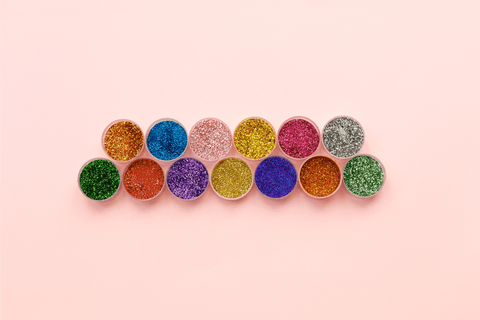As the nights grow darker and the cold weather sets in, many people turn to candles to create a cozy atmosphere in their homes. But what if there was a safer solution to satisfy their cozy needs? Adding lights to your epoxy resin creations can offer both a business opportunity during the darker months and a unique touch to your own home decor. With Christmas approaching, you could even create festive-themed projects and sell them as beautiful Christmas decorations.

Whatever your reason for wanting to incorporate lights into your resin projects, we're here to guide you through the process. In this article, we'll explain how to add lights to your epoxy resin creations in a safe and effective manner.
Read more: How to Install LED Tail Lights
Choosing the Right Lights for Epoxy Resin
When it comes to lighting up your epoxy resin projects, LED lights are the way to go. They are readily available online and come in various lengths, sizes, and brightness levels. LED lights are a great choice because they don't generate heat, unlike other types of lights that could potentially affect the resin and make it flexible. The type of LED lights you choose will depend on the size and nature of your project. For smaller projects, opt for smaller, less bright lights.
Preparing Your Workspace
Before you begin adding lights to your resin projects, ensure that your workspace is well-prepped and organized. Follow the usual safety precautions when working with resin, such as covering your work area to prevent spills and keeping all the necessary equipment within reach. Once you start working with resin, you won't want to interrupt the process by searching for additional supplies.
Read more: LED Light Blinking Fast? How and Why Turn Signals Blink Fast After Installing LED Lights
Enhancing Your Resin with Colors and Additives
To create visually stunning resin projects with lights, consider incorporating colors and additives like glitter. Think about the desired look you want to achieve and experiment with different color combinations to ensure the lights can shine through. Using less color can help maintain the translucency of the resin, allowing the lights to illuminate the project effectively.

Adding glitter can be particularly captivating, as it reflects and enhances the lights, making your project stand out even more. Remember that a little glitter can go a long way in resin creations with lights.
Mixing the Resin and Preparing the Lights
Start by mixing your resin according to the instructions provided by the brand you're using. Measure, mix, and pour the resin as recommended. While your resin mixture sits aside, it's time to prepare the lights.
Ensure that the lights are in working order before placing them in your mold. Simply scrunch or wind the wire to fit it in the mold in the desired arrangement for your project.
Note: If you're using LED lights with a plug, leave enough wire at the end of the lights so that your project can be plugged in at a safe distance from the socket.
Read more: Liquid Detected in Lightning Connector
Incorporating Lights into Your Resin Projects
Once the lights are in position in your mold, carefully pour the epoxy resin mixture as you normally would. If your project requires multiple layers, monitor the lights' position to avoid any shifting while waiting to pour the next layer.
When torching the bubbles from the top of your project, exercise caution near the lights, especially if you're layering the resin. Adjust your torching technique as needed to prevent any damage to the lights or the resin.
Curing and Finishing
After pouring the resin, allow your project to cure. The curing time may vary depending on the brand of resin you're using. Follow the instructions provided by the manufacturer to determine the appropriate curing time.
Once your projects have fully cured, remove them from the molds and switch on the lights to see the full effect. For the best visual impact, darken the room and enjoy the mesmerizing glow of your resin creations.
Finally, finish off the edges of your projects and tidy up any drips or imperfections, just as you would with any other resin project.

We hope you find joy in experimenting with lights in your resin creations. If you'd like to share your projects with us, don't forget to tag @craft.resin. We love seeing all the incredible creations and how you evolve in your resin journey with us.
Team Craft Resin
Read more: Does LED Lighting Work in Freezing Temperatures?
Frequently Asked Questions
1. Can I use any type of lights in epoxy resin projects?
No, it's essential to use LED lights for epoxy resin projects. Other types of lights that generate heat can affect the resin and make it flexible.
2. Can I add colors and additives like glitter to my resin projects with lights?
Yes, you can enhance your resin projects with colors and additives. Glitter, in particular, can create a captivating effect as it reflects and enhances the lights.
3. How do I ensure the lights don't move during the layering process?
While layering the resin, monitor the lights' position to prevent any movement. Be careful when torching the bubbles near the lights, or consider avoiding direct contact.
4. How long does it take for epoxy resin projects to cure?
The curing time can vary depending on the brand of resin you're using. Refer to the manufacturer's instructions for specific curing times.
5. Can I adjust the appearance of my resin projects after pouring the resin?
Yes, you can refine the edges and tidy up any imperfections on your resin projects after they have cured. Take your time to achieve the desired finish.
Follow for more: Lynn Delagarza


